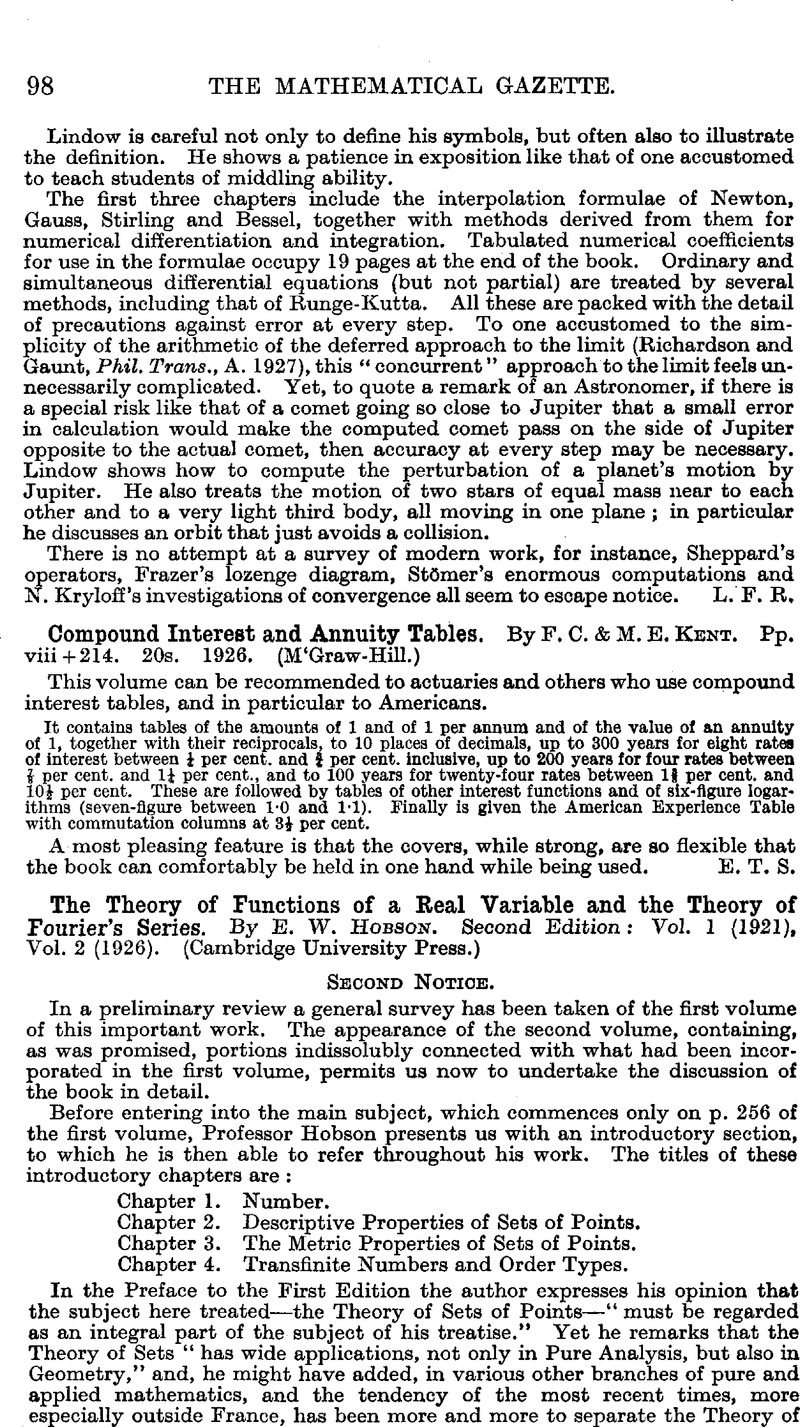Article contents
The Theory of Functions of a Real Variable and the Theory of Fourier’s Series. By E. W. Hobson. Second Edition : Vol. 1 (1921), Vol. 2 (1926). (Cambridge University Press.)
Published online by Cambridge University Press: 03 November 2016
Abstract

- Type
- Reviews
- Information
- Copyright
- Copyright © Mathematical Association 1928
References
page note 101 * In which the definition of order (p. 170) contains a lapsus tacitly corrected in the second memoir.
page note 101 † “(c.) Qualunque sia l’elemento a; di « si ha che : o x non ha l’immediatemente precedente; o esiste un precedente y di x, non avente l’immediatemente precedente, tale che gli u che sono, ad un tempo, sequenti di y e precedenti di x, formano una classe finita” loc. cit. p. 157).
page note 102 * Rend, di Pal. xi. p. 157. “II sig. G. Cantor chiama ‘classe ben ordinata’ quella classe ordinata che soddisfa alle condizioni (a), (b)” (i.e. (i), (ii), supra). “ Avvi notevole differenza tra la classe ben ordinata e la classe perfettamante ordinata : sieno.p. es., a1 a2, a3, … b1, b2, b3, … gli elementi di due classi numerabili; se consideriamo la classe ordinata a1, a2, a3 , … b3, b2, b1 , si vede facilmente che essa è classe ben ordinata ma non perfettamente ordinata, mentre a1 , a2, a3, … b1 b2, b3 , … è classe perfettamente ordinata e, in consequenza, anche bene ordinata.”
page note 102 † Loc. cot, see preceding footnote.
page note 102 ‡ Quoted by Hobson. vol. i, p. 212.
page note 103 * II sig. Cantor dice veramente numero ordinale al posto di “tipo d’ordine di una classe ben ordinata.” . . . Del resto ciò ha nessuna influenza sulle nostre conclusioni, per le quali basta sia provato che i nostri T sono precisamente i tipi d’ordine del sig. Cantor.” “Scrivendo T al posto di ‘tipo d’ordine’” (p. 159).
page note 103 † It might be contended that we do not need to take a new element; it would suffice to take the first of our numbers and place it after the last, viz. after a. But the fallacy is really the same as the above, there is no place after a. Indeed the term’ after Ω” has not been and cannot be defined, It is equivalent to “greater than the greatest.”
- 2
- Cited by


